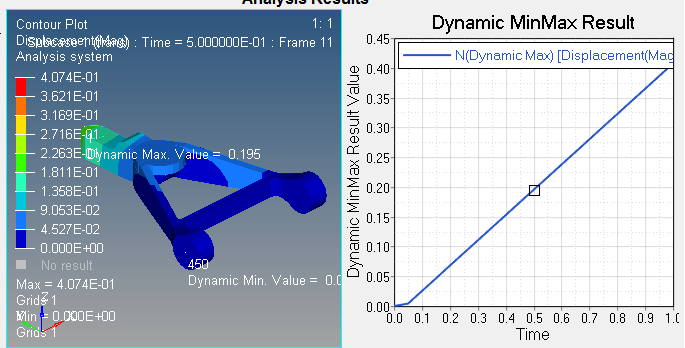Hi,
i was trying to run direct transient analysis for a simple model. while checking the displacement, i got a continuous displacement as shown in fig. as you can see here, the displacement keeps on increasing . but after 0.8 sec, the load in the table is zero. i have also attached .fem file for your reference.
Regards
Akash
<?xml version="1.0" encoding="UTF-8"?>
Unable to find an attachment - read this blog